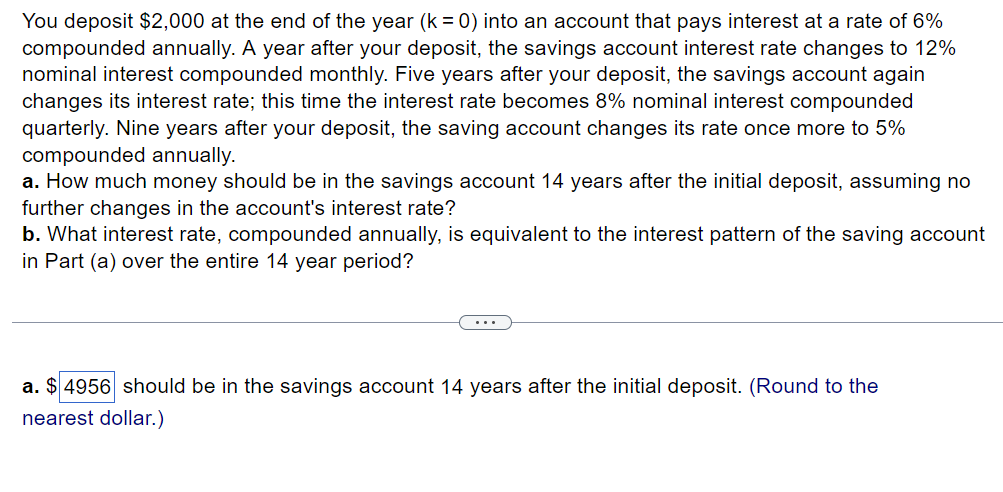Answered step by step
Verified Expert Solution
Question
1 Approved Answer
PLEASE PLEASSEE HELP ME ! ! ! ! IVE SPENT 5 HOURS ON IT ! ! ! STILL WRONG!!!! PLEASE HELP ME WITH PART A
PLEASE PLEASSEE HELP ME IVE SPENT HOURS ON IT STILL WRONG!!!! PLEASE HELP ME WITH PART A AND B
You deposit $ at the end of the year into an account that pays interest at a rate of
compounded annually. A year after your deposit, the savings account interest rate changes to
nominal interest compounded monthly. Five years after your deposit, the savings account again
changes its interest rate; this time the interest rate becomes nominal interest compounded
quarterly. Nine years after your deposit, the saving account changes its rate once more to
compounded annually.
a How much money should be in the savings account years after the initial deposit, assuming no
further changes in the account's interest rate?
b What interest rate, compounded annually, is equivalent to the interest pattern of the saving account
in Part a over the entire year period?
a $ should be in the savings account years after the initial deposit. Round to the
nearest dollar.

Step by Step Solution
There are 3 Steps involved in it
Step: 1

Get Instant Access to Expert-Tailored Solutions
See step-by-step solutions with expert insights and AI powered tools for academic success
Step: 2

Step: 3

Ace Your Homework with AI
Get the answers you need in no time with our AI-driven, step-by-step assistance
Get Started


